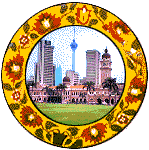| | ||||||||||||||||||||||||||||||||||||
Located at the southern tip of the Peninsula, Johor Bahru is the state capital of Johor Darul Takzim. JB, in short, was established in 1855 by the late Sultan Abu Bakar (the Father of Modern Johor) and now serves as the administrative and commercial center of the state.
Connected to Singapore by road and rail via a modern causeway, JB is also the Peninsula's southern gateway. Consisting of a diverse ethnic mix of races, JB offers the visitor heritage attractions, colorful culture, delectable local cuisine, and exciting recreational activities.
Popular with Singaporeans, JB boasts of myriad landmarks, such as The Grand Palace with its distinct Anglo-Malay architecture, which houses the museum where priceless treasures of the Royal Collection are showcased.
The "Ghazal" music, which is unique to Johor, is usually performed during cultural shows and weddings. Another famous performance distinctly Johorean is the "Kuda Kepang" dance, which is spun from tales of Islamic heroes. Dancers imitate the movement of horses to the music of a traditional orchestra.
Shopping opportunities abound in JB. Modern malls, arcades, handicraft centers, bazaars and markets offering international and local products all vie for attention. Local craftwork is sure to catch the eye and they do make lovely souvenirs of a trip here. Furthermore, there is the JB Duty Free Complex located at the JB International Ferry Terminal. Known as "ZON", it is a large duty free department store and supermarket encompassing 163 retail outlets, a hypermarket, and 30,000 feet of shopping area. The complex offers a variety of goods such as branded designer wear from London, Paris, New York and the likes. Glassware, confectionery, and other items are also offered.
Another interesting side of JB can be experienced when night falls over the city. A sumptuous array of food stalls and vendors appear (as if by magic) and the adventurous tourist should delight in trying out the taste of popular local dishes such as the famous Laksa Johor, flake fish and gravy cooked with coconut milk and served with noodles and vegetables.





 In the same way, the city brings together Malaysia's past and present, its many constituent cultures, and even its remarkable natural treasures, allowing first-time visitors an invaluable opportunity to see Malaysia as a whole before setting off to explore its parts. In the botanical and bird parks of the
In the same way, the city brings together Malaysia's past and present, its many constituent cultures, and even its remarkable natural treasures, allowing first-time visitors an invaluable opportunity to see Malaysia as a whole before setting off to explore its parts. In the botanical and bird parks of the 